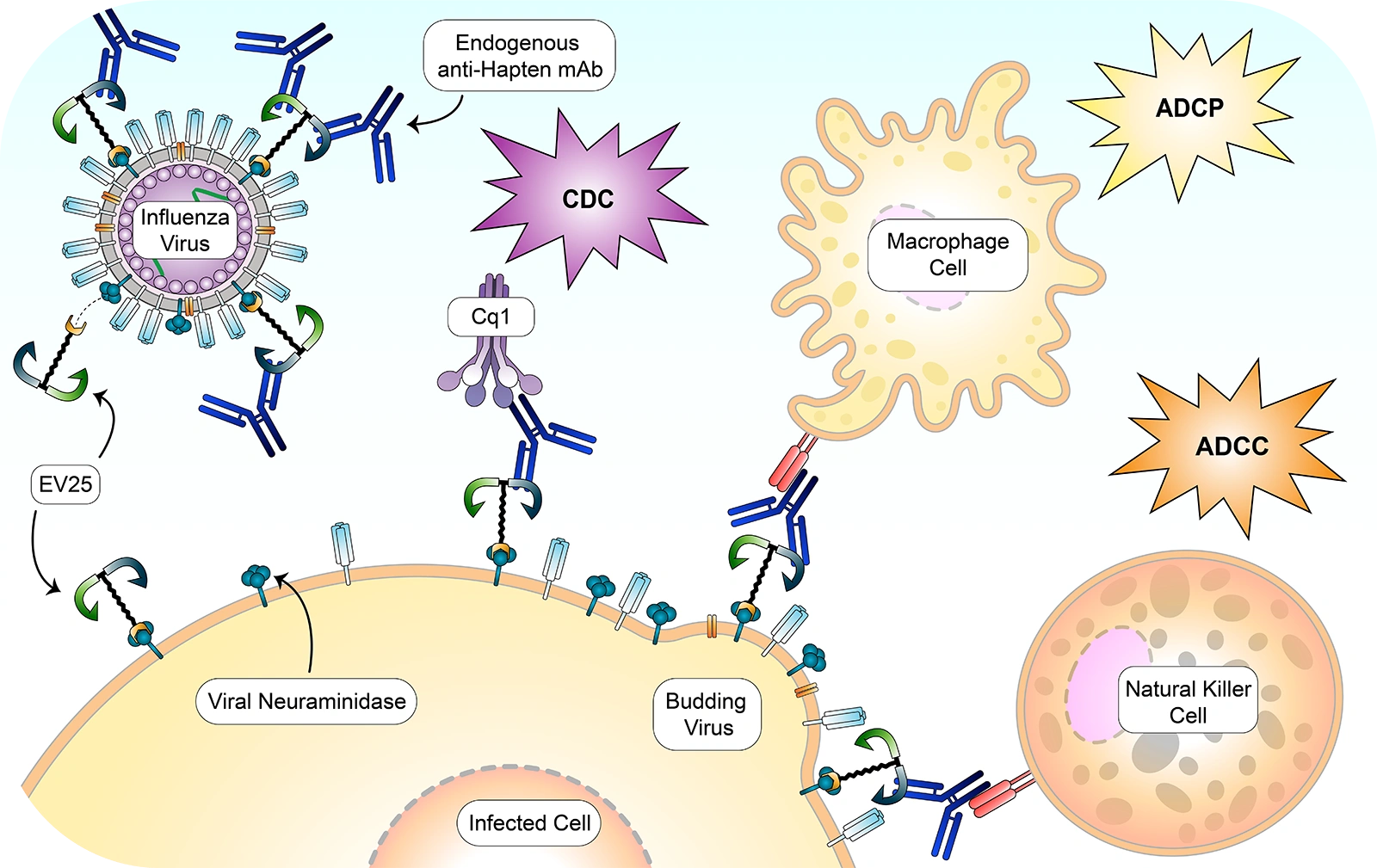Our Science
Revolutionizing the application of small molecule, bi-specific immunotherapies.
Our Platform
Our BAiT molecules are engineered to recognize diseased cells while activating cytotoxic immune cells to clear them. These molecules use highly specific ligands combined with immune-activating payloads to drive targeted killing. As we expand this platform, we aim to build therapies that can address a wide range of diseases. Our initial focus is on viral respiratory infections such as influenza and RSV.
Our Influenza Therapy
Our lead molecule for influenza (EV25) has been shown to be more effective than the current standard of care in preclinical models, with single dose efficacy and an extended therapeudic window.
Mechanism of Action
The EV25 molecule links two immunologic hapten ‘hooks’ to a Neuraminidase Targeting Ligand (NTL). Since all humans naturally carry antibodies against these haptens, EV25 effectively “BAiTs” the anti-hapten antibodies into coating viruses or virus-infected cells. This antibody coating then signals NK cells, macrophages and the complement cascade to recognize and eliminate the virus and infected cells.

Efficacy
EV25 just completed its First-in human Phase1/2A, safety and human influenza challenge study, which demonstrated that EV25 is safe, well-tolerated and significantly reduces viral loads and influenza symptoms, paving the way for larger Phase 2b trials, which are planned for 2026.
Modularity in Action
Our modular platform can be applied to a wide variety of disease states. We are currently developing variants for RSV, as well as other respiratory viruses and non-viral infections.
Development Pipeline